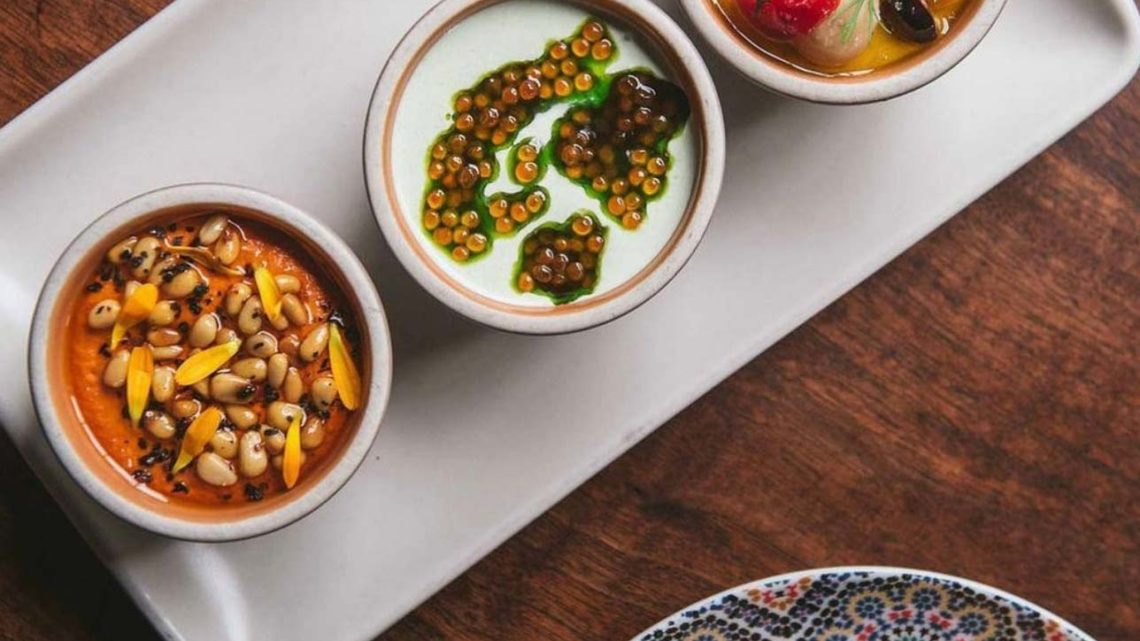
An overview of Moroccan cuisine
Explore the richness of Moroccan cuisine, a sensory journey through spices, traditional dishes and unique flavors. Discover a fascinating culinary culture.
Moroccan cuisine, rich in flavor and color, is the fruit of a thousand years of cultural blending. The cradle of a refined culinary tradition, it stands out for its variety of dishes, intoxicating spices and unique preparation methods that tell the story of the peoples who have trodden this land. With Berber, Arab, Andalusian and even African influences, it unfolds in a mosaic of tastes and scents that invite you on an unforgettable sensory journey. It’s a cuisine that celebrates conviviality, where meals often turn into shared feasts.
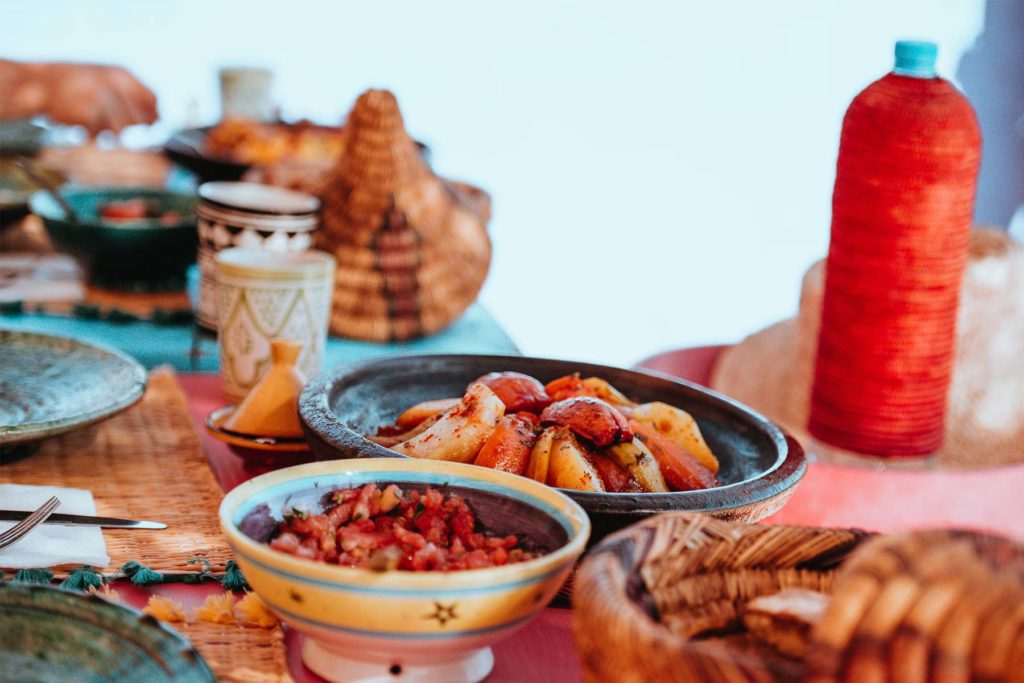
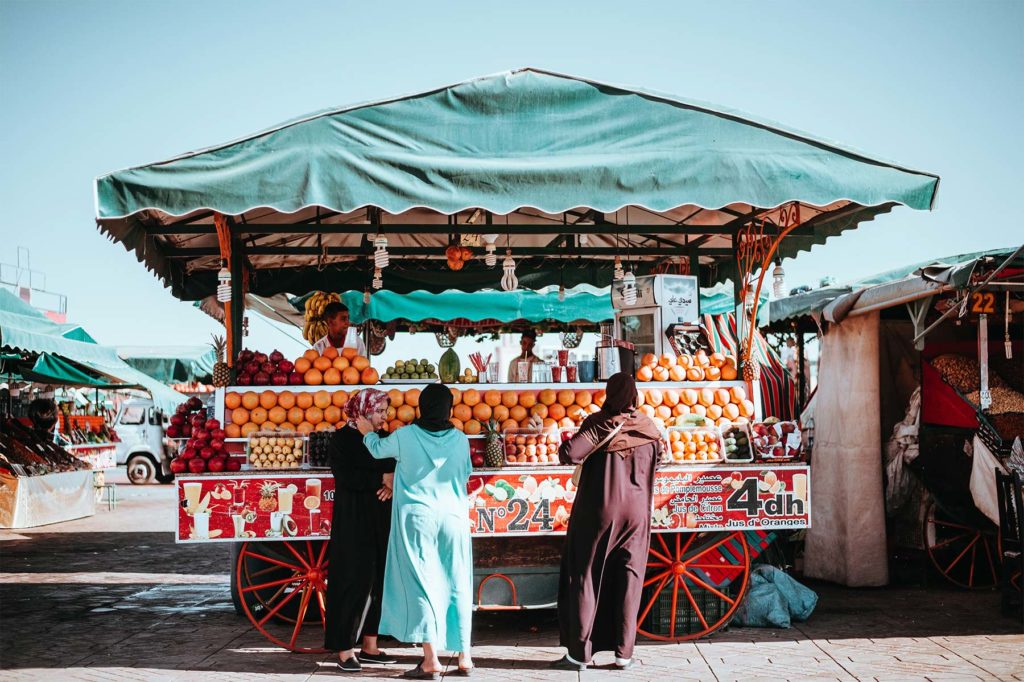
Traditional Moroccan dishes
Traditional Moroccan dishes are a veritable hymn to conviviality and diversity. At the heart of these culinary traditions is couscous, renowned for its ability to bring families together around the same table. Tagine, meanwhile, is a typical glazed pot where meat, vegetables and dried fruit simmer under a conical lid. Pastilla, a fusion of sweet and savory, is a celebration of textures, with layers of crispy brick pastry topped with pigeon or chicken, almonds and cinnamon. Harira, a rich, fragrant soup, often accompanies the meal to break the fast during the month of Ramadan.
Spices used in Moroccan cuisine
Moroccan cuisine is inseparable from its arsenal of spices. Ras el hanout, literally “the best in the store”, is a blend of 20 to 30 spices and embodies the essence of Moroccan gastronomy. Taliouine saffron, one of the most prized in the world, adds its golden color and delicate fragrance. Cinnamon, cumin, coriander, paprika and ginger are also omnipresent, each adding an extra dimension to already complex dishes.
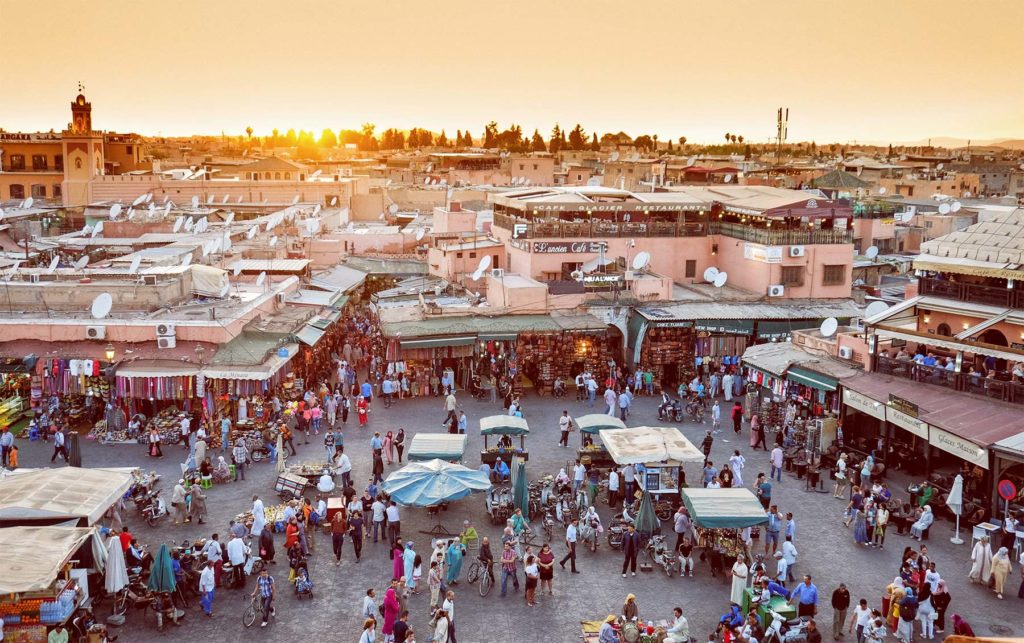
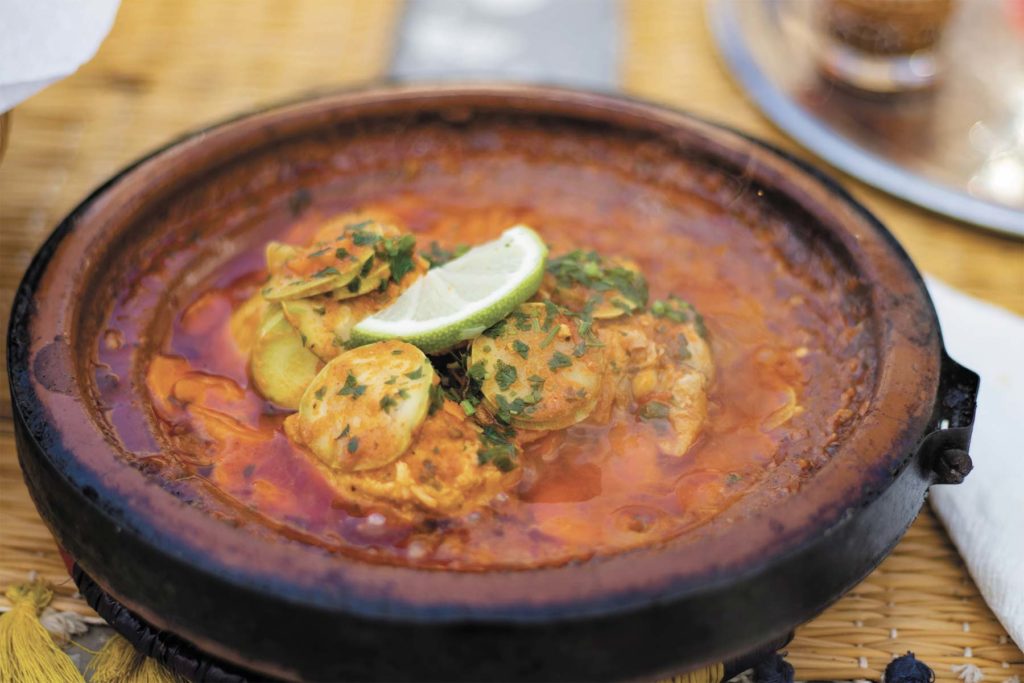
Moroccan cooking techniques
The preparation of Moroccan dishes is an art passed down from generation to generation, often accompanied by a social ritual. The slow cooking process, as with tagines, allows the flavors to penetrate deeply. The charcoal-grilling technique is also widespread, giving meats and vegetables a distinctive smoky flavor. Moroccan pastry-making also requires particular dexterity, especially when it comes to shaping fine pastry and decorating cakes with almonds and honey.
Morocco’s regional cuisines and their specificities
Each region of Morocco has its own culinary identity. The cuisine of the Moroccan coast, for example, is renowned for its fish tagines and grilled seafood. In the Atlas mountains, dishes are often more robust, with generous use of root vegetables and dried meats. Saharan cuisine offers a palette of desert flavors, with dates and sand bread (bread baked underground) taking center stage.

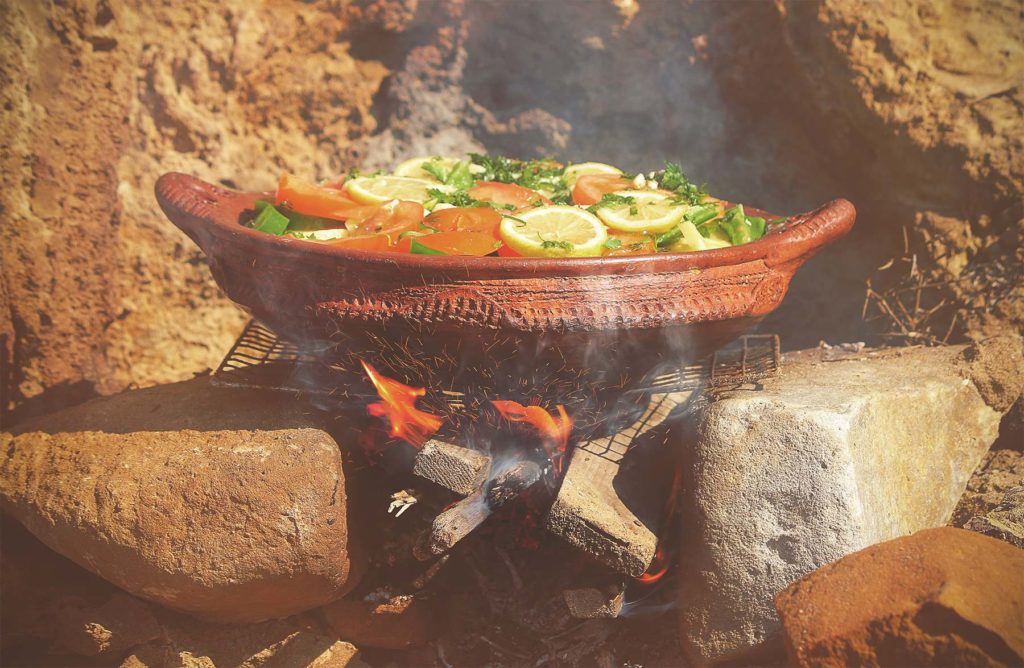
Street food in Morocco
Moroccan street food is an invitation to taste the authenticity of local flavors. Lamb kebabs (kefta), fresh fish sandwiches in the ports, boiled snails served in a spicy broth and Moroccan crepes (msemen) are omnipresent. These delicacies are often accompanied by mint tea, Morocco’s national drink, offering a sweet refreshment between tastings.
Differences with Algerian and Tunisian cuisine
Although they share certain similarities, Moroccan cuisine differs in its use of certain spices and herbs. For example, the Ras el hanout blend is more typical of Moroccan, while Algerian cuisine often favors the spice blend known as “charmoula”. Tunisian cuisine, meanwhile, is renowned for its more liberal use of chillies, offering distinctly spicier dishes, such as the famous Tunisian couscous.
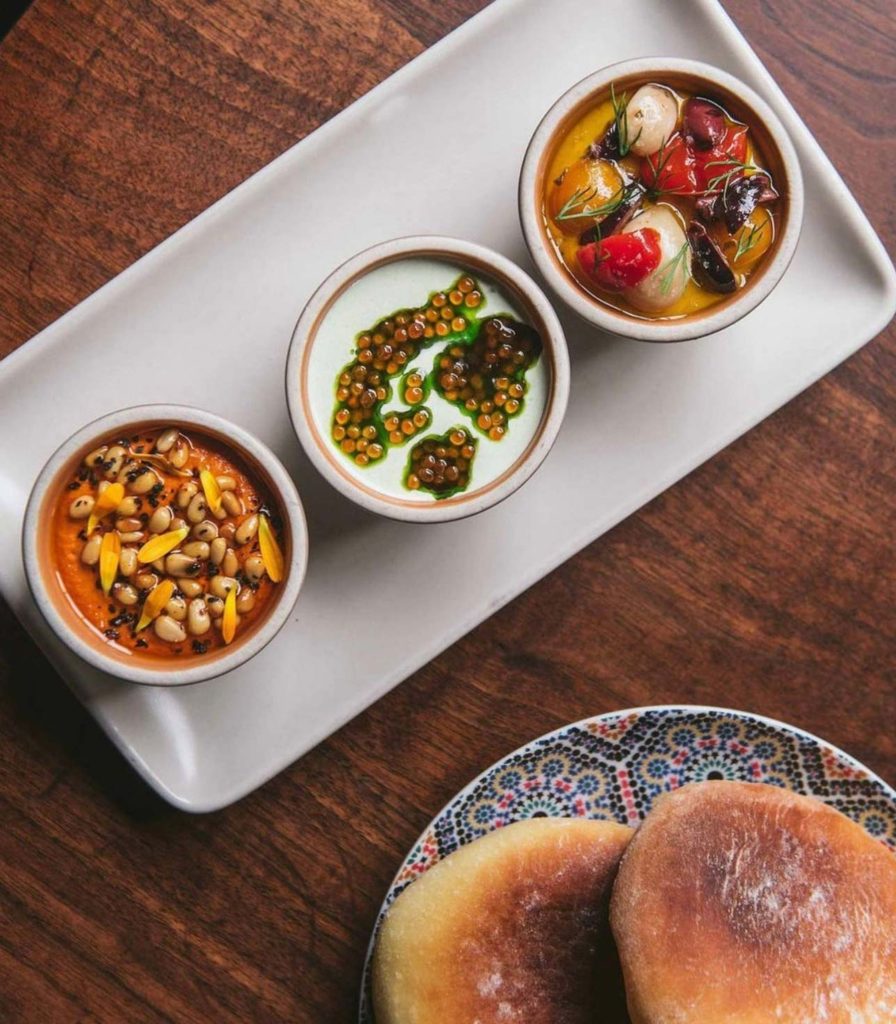
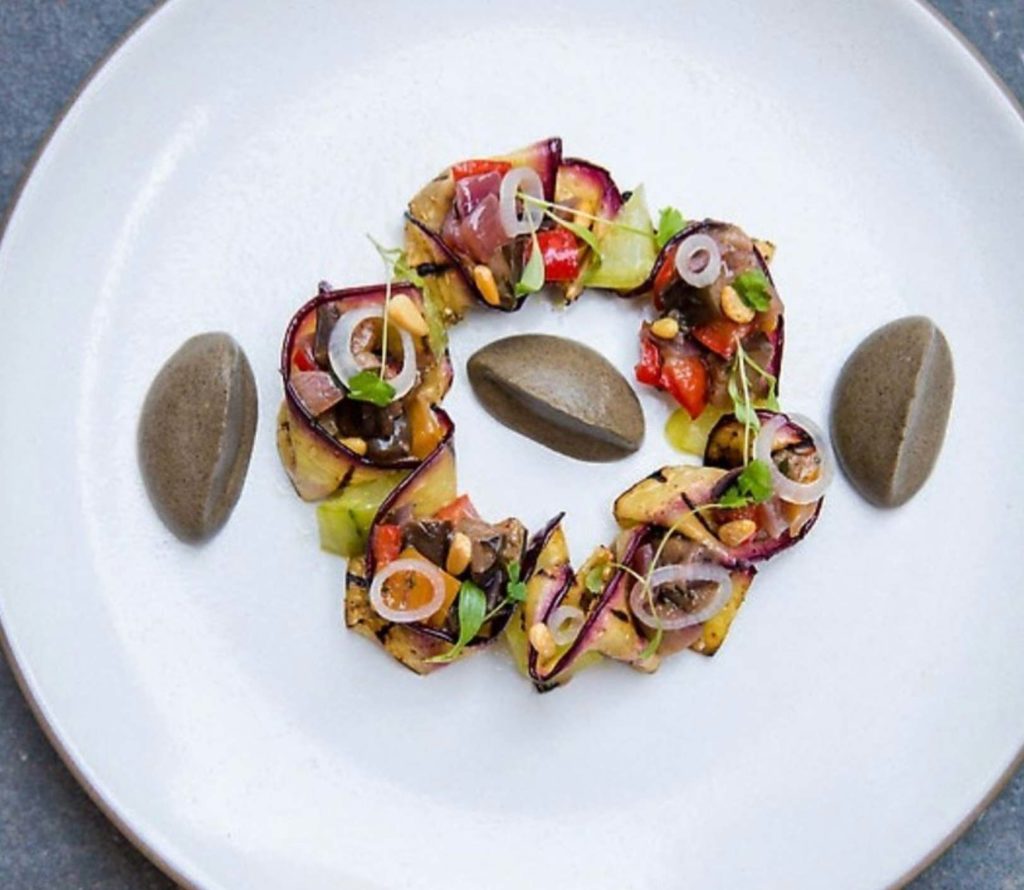
Ambassador restaurants and chefs for Moroccan cuisine
Moroccan cuisine has its ambassadors all over the world. Chefs such as Mourad Lahlou and Najat Kaanache have taken Moroccan flavors far beyond the kingdom’s borders, integrating modernity and creativity with these age-old traditions. Gastronomic restaurants in Morocco and abroad offer contemporary interpretations of Moroccan classics, allowing this cuisine to evolve while remaining true to its roots.
Moroccan cuisine is a weaving of ancestral traditions and contemporary innovations, a constant dialogue between past and present. It remains one of the world’s most fascinating cuisines, inviting generous sharing and the discovery of exquisite flavors.